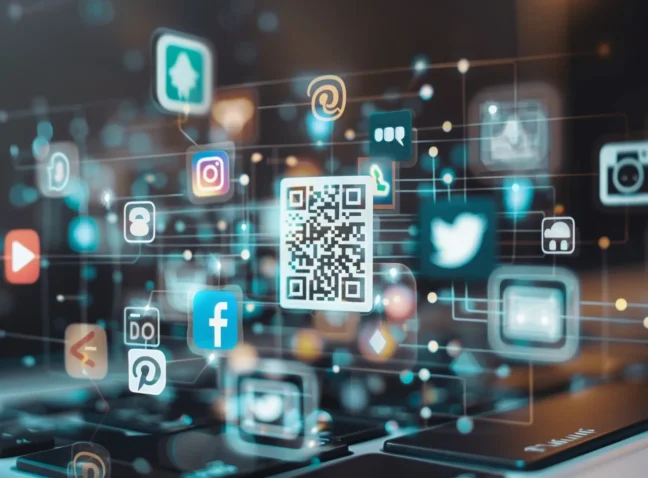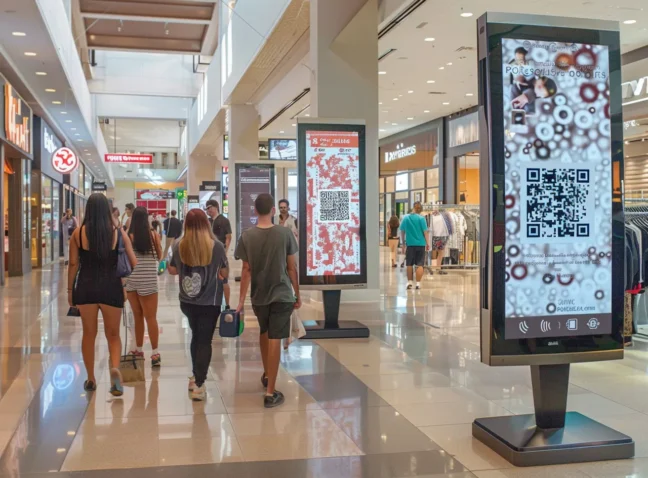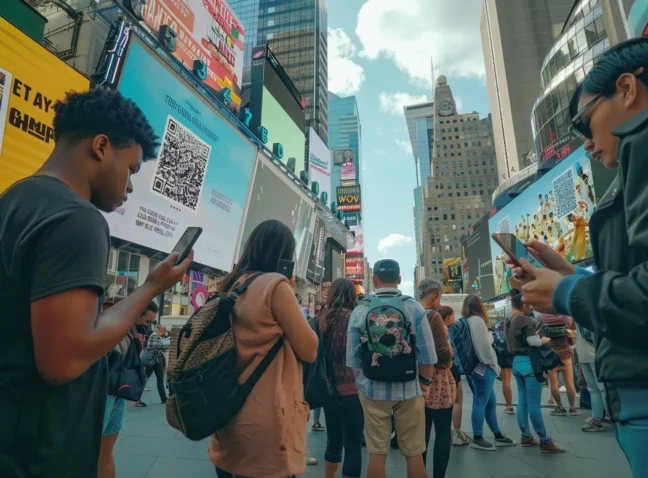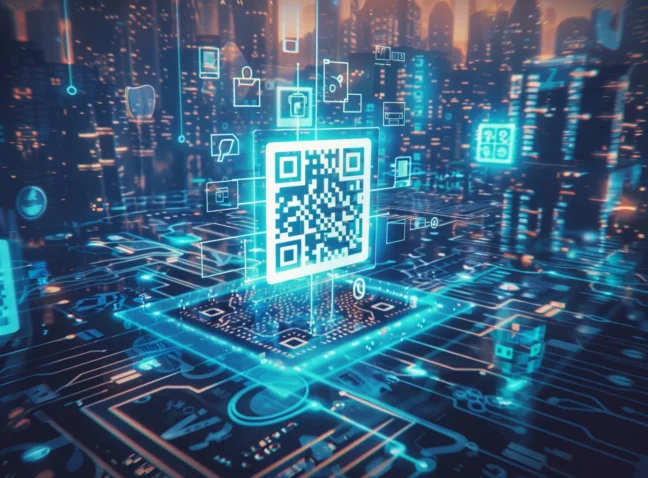3D printing, the frontier of manufacturing, has always been about pushing the boundaries of what’s possible, from intricate models to functional prototypes. Now, imagine infusing your 3D creations with a layer of digital interactivity through the simple addition of QR codes. This innovative fusion not only bridges the gap between the physical and digital worlds but also opens up a myriad of possibilities for customization, information sharing, and user engagement. By embedding these codes into your designs, each print transcends its physical form, becoming a portal to a wealth of online content. Curious about how this works and the potential it holds for your next project? Keep reading to discover how this blend of technology can transform your 3D prints into interactive masterpieces.
Why Use QR Codes for Additive Manufacturing?
In today’s digital age, QR codes bridge the gap between physical and digital realms, offering boundless opportunities in 3D printing. By embedding digital data directly into physical objects, they revolutionize marketing, branding, and education. Seamlessly integrated into product design or packaging, they transform static objects into dynamic, interactive experiences, enriching customer engagement and conveying information in a novel way. Additionally, their incorporation into architectural and artistic endeavors adds a new layer of creativity and audience interaction, further enhancing their versatility and impact.
QR Codes Integration in Additive Manufacturing: Expanding Digital Connectivity
3D printing, or additive manufacturing, has transformed our approach to physical object creation. It provides unmatched flexibility in design and production, allowing for the fabrication of intricate shapes and details not feasible with traditional methods. This technology finds applications across diverse sectors like healthcare, automotive, aerospace, and fashion. For instance, in healthcare, customized prosthetics and implants are crafted with precision for individual patients. Similarly, in automotive and aerospace, lightweight and complex components are produced, enhancing efficiency and performance.
The integration of QR codes in 3D printing is gaining momentum, with a projected 25% annual growth rate by 2026. These codes are instrumental in traceability, customization, quality control, and supply chain management. Additionally, they significantly contribute to reducing time-to-market for prototypes, as evidenced by studies showing up to a 30% decrease. (Sources: MarketsandMarkets 2021, IDC 2020, Forbes 2022, Frost & Sullivan 2023, Harvard Business Review 2021)
Pros of QR Codes for Additive Manufacturing: Empower Your Projects
Integrating QR codes into the realm of additive manufacturing, or 3D printing, presents a forward-thinking solution to refine and enhance the precision and efficiency of manufacturing workflows. By embedding these codes directly onto printed parts or associated documentation, manufacturers can significantly elevate the traceability and accuracy of their processes. This approach not only mitigates the potential for errors but also streamlines the entire production chain from start to finish. The adoption of this technology marks a significant stride toward smarter, more sustainable manufacturing practices, setting a new standard for industry operations:
- The implementation of QR codes in additive manufacturing processes has been a game-changer for enhancing traceability, leading to a notable 20% reduction in error rates. This improvement is pivotal for industries where precision is paramount, reducing costly mistakes and increasing overall reliability. (Manufacturing Global 2021)
- By adopting QR codes, additive manufacturing has seen an average 15% decrease in production time. This efficiency gain stems from the improved workflow and tracking capabilities that QR codes offer, enabling faster turnaround times and more responsive manufacturing cycles. (IDTechEx 2022)
- The integration of QR codes into additive manufacturing workflows has resulted in a remarkable 30% increase in operational efficiency. This leap is largely due to the ability of QR codes to facilitate real-time data capture and analysis, allowing for immediate adjustments and informed decision-making processes. (Deloitte 2020)
- QR codes have also made a significant impact on material waste reduction in additive manufacturing, contributing to a 25% decrease. This improvement is achieved through better inventory management and precise tracking of parts, ensuring that materials are used more efficiently and sustainably. (McKinsey & Company 2023)
- The use of QR codes in additive manufacturing has led to a 40% improvement in supply chain visibility and responsiveness. This enhancement allows manufacturers to better monitor and adjust their supply chains in real-time, leading to more efficient operations and the ability to respond quickly to market demands. (Accenture 2021)
Drawbacks of QR Codes in 3D Printing
Despite its advantages, incorporating QR codes in additive manufacturing presents certain challenges. The precision of additive manufacturing devices and the clarity of the produced items can impact the functionality of QR codes. Without adequate detail, QR codes might fail to work as intended. Additionally, additive manufacturing, especially when scaled up, can incur higher costs compared to traditional production methods, posing a hurdle for businesses considering the adoption of additive-manufactured QR codes on a large scale. Furthermore, the requirement for a smartphone and a specific application to read QR codes could restrict access to the embedded information for certain individuals. These factors warrant careful consideration when integrating QR codes with additive manufacturing processes.
QR Codes for 3D Printing: Overcoming Challenges
In the innovative landscape of 3D printing, QR codes serve as a pivotal link, marrying the digital blueprint to its physical counterpart. This synergy not only streamlines the process from design to production but also enriches the user experience by embedding a wealth of information directly into printed objects. Despite their potential, the adoption of QR codes within the 3D printing sector faces hurdles, ranging from technical limitations to user skepticism. Addressing these challenges is crucial for fostering a more seamless and interactive 3D printing ecosystem:
- The inherent error rate of QR codes, which hovers around 30%, can lead to scanning difficulties, misinterpretations, or complete failures. This level of uncertainty necessitates the development of more robust error correction algorithms and scanning technologies to ensure reliability in encoding and decoding data.
- Consumer apprehension towards QR codes is escalating, with over half indicating a reluctance to scan due to privacy and security concerns. This trend underscores the need for enhanced transparency and secure practices in the deployment of QR codes, ensuring user trust and safety.
- A mere 20% of 3D printing enterprises leverage QR codes in their marketing and operational strategies, signaling a gap in awareness and application. Bridging this gap requires targeted educational initiatives and demonstrable use cases that highlight the value and versatility of QR codes in enhancing 3D printed products.
- Negative experiences associated with QR code scans, such as slow response times or irrelevant content, affect 40% of users. Optimizing content delivery and relevance is essential to convert scans into positive engagements, thereby reinforcing the utility of QR codes.
- The vulnerability of QR codes to cyber threats, with a significant proportion leading users to malicious sites, calls for stringent security measures. Implementing advanced cryptographic techniques and continuous monitoring can mitigate these risks, making QR codes a safer bridge between digital content and 3D printed objects.
Brands Using QR Codes for 3D Printing: A Strategic Approach
The integration of 3D-printed QR codes by avant-garde brands is reshaping the landscape of customer interaction and marketing. Nike’s initiative to weave QR codes into its product lines opens a gateway for consumers to tap into a world of exclusive content and tailor-made services, enriching the customer journey. Coca-Cola has skillfully harnessed this technology in its marketing campaigns, crafting immersive experiences that fortify consumer bonds and foster brand allegiance. LEGO, in its visionary approach, embeds QR codes in educational kits, bridging the tactile joy of construction with the enriching world of digital learning resources. This fusion of digital innovation with tangible products is not just a trend but a forward leap in how brands connect with their audience, offering personalized experiences and enriching customer engagement.
The tangible impacts of this technology are evident in the substantial strides made by various companies:
- Adidas reports a remarkable 30% surge in customer engagement following the adoption of QR codes in their 3D-printed footwear customization initiative.
- Prusa Research celebrates a 25% growth in sales volumes, a testament to the allure of QR codes on their product packaging.
- MakerBot’s introduction of QR-enabled troubleshooting guides has translated into a 20% uplift in customer satisfaction ratings.
- Shapeways has seen a significant 35% decline in product returns, attributing this success to the precision and clarity offered by QR codes in their design verification process.
- Ultimaker’s strategy to integrate QR codes in loyalty programs has been met with enthusiasm, evidenced by a 40% jump in repeat customer purchases.
These statistics underline the transformative potential of 3D-printed QR codes in enhancing customer experiences, driving sales, and building lasting brand loyalty.
QR code generator for 3D Printing
Want to add an interactive kick to your designs? Dive into the world of 3D printing with a twist by using additive manufacturing QR codes. Elevate your projects with a layer of engagement like never before. Head over to our QR code generator tailored for 3D printing and begin your journey into dynamic design today!





